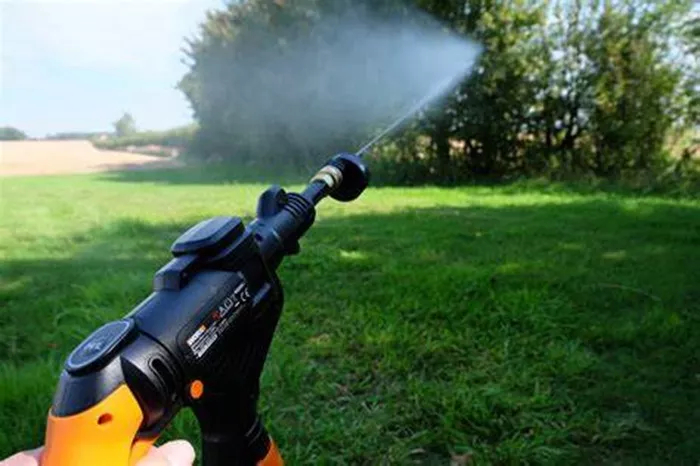A pressure washer is a powerful cleaning tool that relies on high – pressure water jets to blast away dirt, grime, and stubborn stains. However, it can be incredibly frustrating when your pressure washer fails to build pressure. Without sufficient pressure, the machine simply won’t perform its cleaning tasks effectively. This issue can stem from a variety of sources, ranging from problems with the water supply to internal component failures within the pressure washer itself. In this article, we’ll delve deep into the common reasons why a pressure washer might not build pressure and explore potential solutions to get your machine back in optimal working condition.
Water Supply Issues
Inadequate Water Flow
One of the most fundamental requirements for a pressure washer to build pressure is a proper water supply. If the water flow rate is insufficient, the pressure washer won’t be able to generate the necessary pressure. This can happen for several reasons. First, check the water source. If you’re using a garden hose, ensure that the faucet is fully open. A partially – opened faucet restricts the water flow, leading to low pressure in the washer. Additionally, the diameter of the hose matters. A narrow – diameter hose can limit the volume of water that can reach the pressure washer, causing pressure – building problems. Consider using a larger – diameter hose, typically at least 5/8 – inch, to ensure an adequate water supply.
Another factor to consider is the water pressure at the source. If the water pressure from your mains or well is naturally low, it can impact the pressure washer’s performance. You can use a water pressure gauge to measure the pressure at the faucet. If the pressure is below the recommended level for your pressure washer (usually specified in the user manual), you may need to install a water pressure booster pump. This device can increase the incoming water pressure, providing the necessary flow for the pressure washer to build its own high – pressure output.
Clogged Water Inlet or Filters
The water inlet and associated filters are crucial components that can affect pressure build – up. Over time, dirt, debris, and sediment can accumulate in the water inlet, blocking the flow of water into the pressure washer. This is especially common if you’re using water from a non – filtered source, such as a pond or a well with high mineral content. To check for a clogged water inlet, first, turn off the water supply and disconnect the pressure washer from the hose. Examine the inlet for any visible signs of blockage, such as dirt or small particles. If there is a filter at the water inlet, remove it and clean it thoroughly. You can use a small brush or a toothbrush to dislodge and remove any trapped debris.
In some cases, the water inlet may have a screen – type filter. If this filter is clogged, it can severely restrict water flow. If cleaning the filter doesn’t solve the problem, there may be a more significant blockage deeper within the inlet. You can try using a pipe cleaner or a small, flexible wire to gently probe and clear the blockage. However, be careful not to damage the delicate components of the inlet. If the blockage persists, it may be necessary to disassemble the inlet further (if possible) or seek professional help.
Other Potential Causes
Air in the System
Air trapped in the pressure washer’s water system can also prevent proper pressure build – up. This can happen when the pressure washer is first started or if the water supply has been interrupted. Air is compressible, unlike water, and its presence in the system can disrupt the normal flow and pressure – building process. To bleed the air from the system, first, make sure the pressure washer is turned off. Then, disconnect the high – pressure hose from the nozzle. Turn on the water supply and let the water run through the pressure washer for a few minutes. This will help flush out any air trapped in the system. After that, reconnect the high – pressure hose to the nozzle and start the pressure washer. Check if the pressure is building up properly.
Seal and Gasket Failures
Seals and gaskets are used throughout the pressure washer to prevent leaks and maintain pressure. Over time, these seals and gaskets can wear out, dry out, or become damaged. When this happens, water can leak from various parts of the machine, leading to a loss of pressure. Inspect all the seals and gaskets in the pressure washer, including those around the pump, the water inlet, and the hose connections. Look for signs of wear, such as cracks, tears, or missing pieces.
If you find a damaged seal or gasket, it should be replaced. When replacing these components, make sure to use the correct size and type of seal or gasket for your pressure washer model. Install the new seal or gasket carefully, ensuring a proper fit. After replacing the seals and gaskets, test the pressure washer to see if the pressure has improved.
Conclusion
When your pressure washer won’t build pressure, it can be a complex issue with multiple potential causes. By carefully checking the water supply, pump components, pressure – regulation system, nozzles, hoses, and other parts of the machine, you can often identify and resolve the problem. Remember to always refer to the user manual for your specific pressure washer model when troubleshooting and making repairs. If you’re still unable to get your pressure washer to build pressure after trying these steps, it may be time to seek the help of a professional repair technician. With a little patience and some basic knowledge, you can get your pressure washer back to its optimal performance and continue with your cleaning projects effectively.
Related topics:

